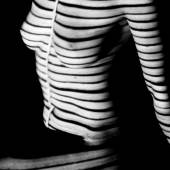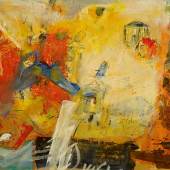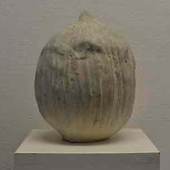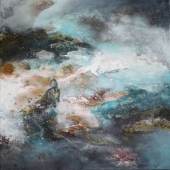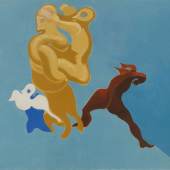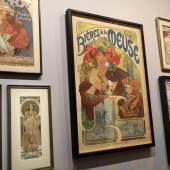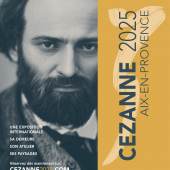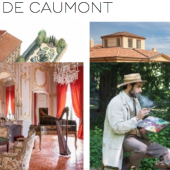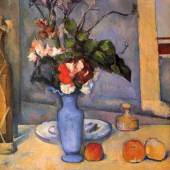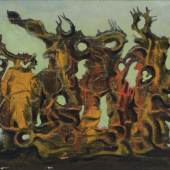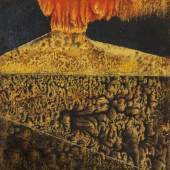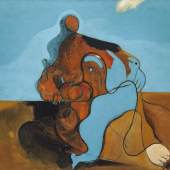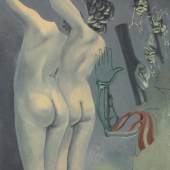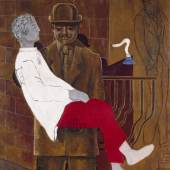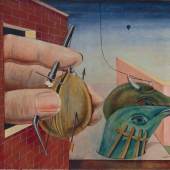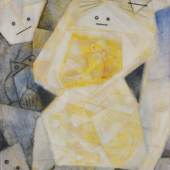Max Ernst Mondes magiques, mondes libérés
-
Ausstellung04.05.2023 - 08.10.2023
This year, the Hôtel de Caumont-Centre d’Art will devote its summer exhibition to the genius of Max Ernst (1891–1976). A learned and prodigious experimental artist, Max Ernst lived through the century of avant-garde movements with an insatiable thirst for creation and left behind a complex and highly personal oeuvre. An artist associated with the Dada group and surrealism, he followed a personal path by distancing himself from the group’s style and produced visionary works imbued with lucidity. The exhibition will present 120 works that retrace the career of this ingenious artist—who was a free and unique personality—and highlight, in particular, his close links with nature, games, magic, and freedom.
Although the scope of his oeuvre remains largely unknown to the general public, the extravagance and polysemy in Max Ernst’s works are impressive. Born in Germany, he established in 1919 a Dada community in Cologne and then went to Paris, where he took part from the beginning in the development of the surrealism of André Breton. He produced many collages and invented new techniques, such as frottage, which consisted of passing a lead pencil over rough surfaces. After being interned at the beginning of the Second World War not far from the Hôtel de Caumont (in the Camp des Milles in Aix-en-Provence), Max Ernst fled France and sought refuge in the United States. He returned to France in 1953 and continued to work intensively on painting, drawing, sculpture and silverware.
Max Ernst never stopped reinventing his art throughout his career. His work is nourished by philosophy, psychoanalysis, science, alchemy, art history, literature and poetry. The exhibition will focus on the major themes of the worlds created by Max Ernst, by illustrating the recurrence of the themes that run through his work. A central section of the exhibition uses the four elements – water, air, earth and fire - which, according to ancient philosophical tradition and alchemy, make up all the matter in the natural world.
The artist’s oeuvre is disconcerting and remarkable. A great intellectual and humanist artist—in the neo-Renaissance sense of the term—, he continually defied perception by combininglogic and formal harmony with unfathomable enigmas, while the oneirism and fantastic coexist, creating landscapes with impenetrable mysteries. Forests of stones, chimeric animals, embodied masks, and anthropomorphic birds … the enigmatic and sometimes even oneiric beauty of Max Ernst’s works immerses the viewer in the extravagance of his magical and liberated world.
The exhibition will benefit from exceptional loans from the Centre Pompidou, the Tate, the Guggenheim in Venice, the Musée Cantini, the Max Ernst Museum in Brühl, and many private collectors who wish to remain anonymous.
This exhibition has been produced in collaboration with Madeinart.
-
10.06.2023Quelques figures du surréalisme : Magritte, De Chirico, Miro Conférence présentée par Laurent...
-
17.11.2023 - 24.03.2024Organised in collaboration with the Mucha Foundation, the Hôtel de Caumont is this year devoting...
-
28.06.2025 - 12.10.2025Paul Cézanne: Meister des Postimpressionismus und Wegbereiter der modernen Kunst Paul Cézanne...
-
Das Hôtel de Caumont befindet sich nur wenige Schritte vom Cours Mirabeau entfernt. Es ist eines...
-
Wo Sie die Werke Cézannes besichtigen können: Musée d’Orsay, Paris...
-
04.05.2023 - 08.10.2023
L'Hôtel de Caumont est ouvert tous les jours.
Du 4 mai au 8 octobre : 10h-19h
Du 9 octobre au 3 mai : 10h-18h
